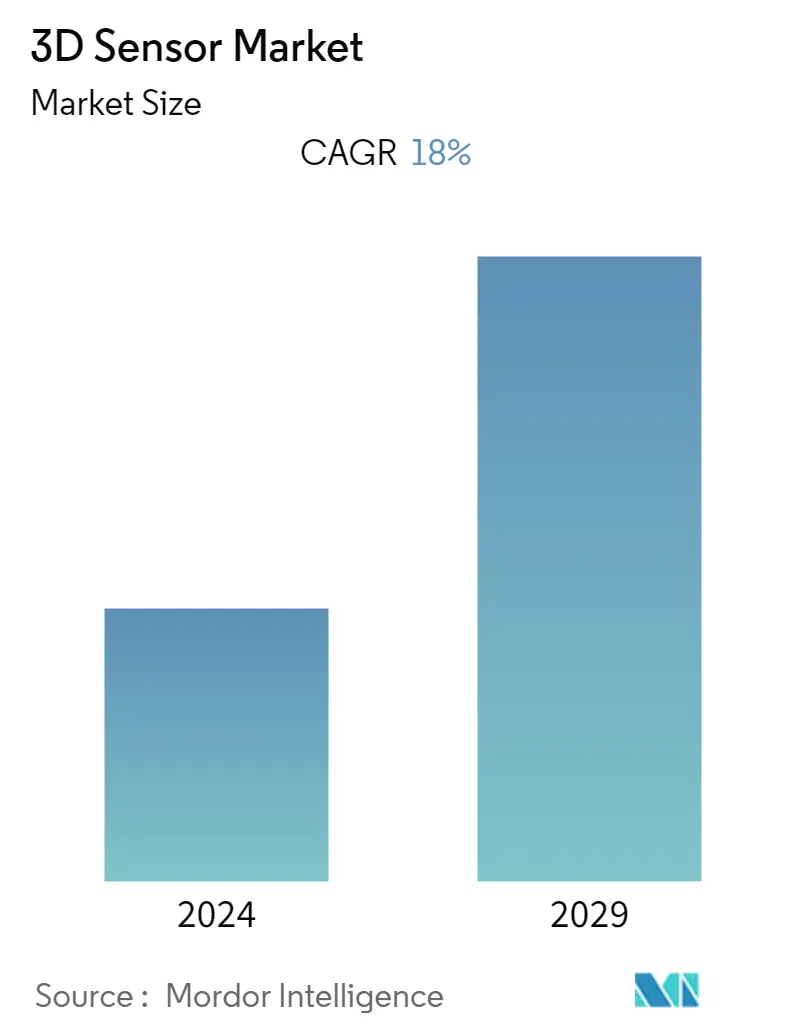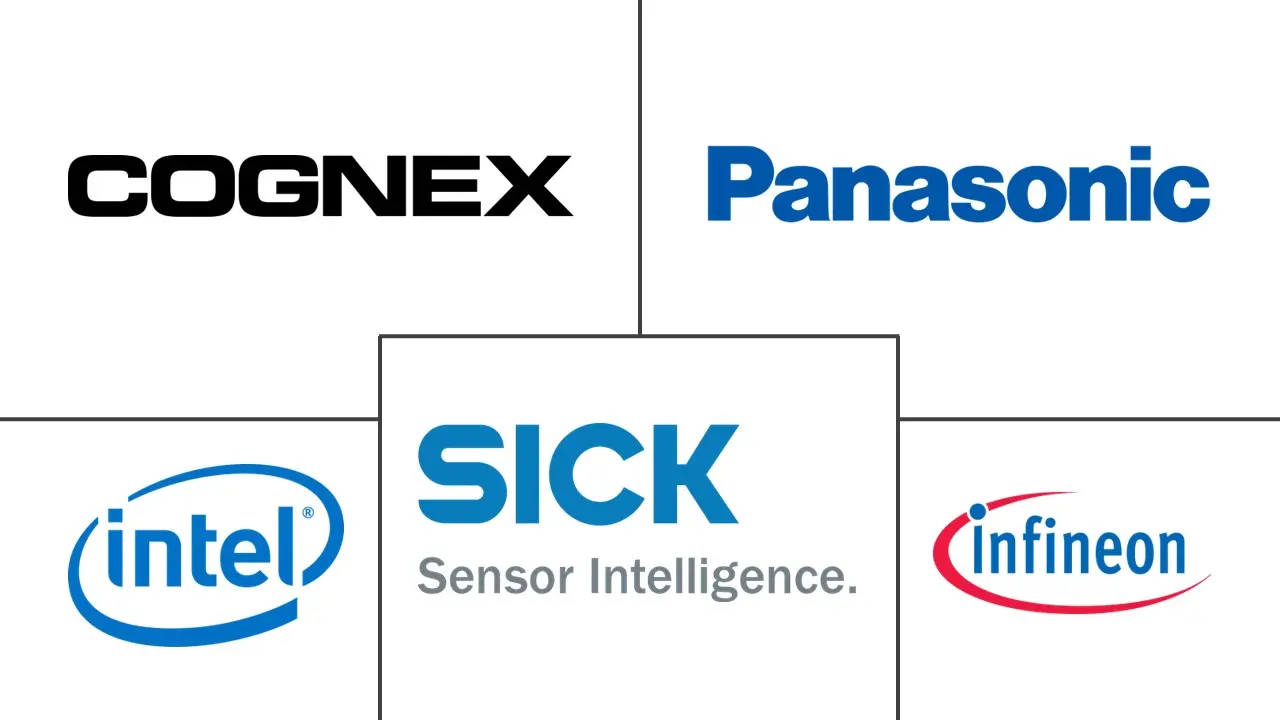Market Size of 3D Sensor Industry

| Study Period | 2019 - 2029 |
| Base Year For Estimation | 2023 |
| CAGR | 18.00 % |
| Fastest Growing Market | Asia-Pacific |
| Largest Market | North America |
| Market Concentration | Medium |
Major Players
*Disclaimer: Major Players sorted in no particular order |
Need a report that reflects how COVID-19 has impacted this market and its growth?
3D Sensors Market Analysis
The 3D Sensor Market is expected to register a CAGR of 18% over the forecast period. The increasing adoption of 3D technology in various industry verticals has developed real-time sensors that can gauge shapes. Instruments that were once bulky are now miniaturized due to advanced technologies. Additionally, rapid technological advancements open up a plethora of new applications across different industry verticals where these sensors can be used.
- Increasing sensor compatibility with the Internet of Things platform is gradually becoming a prerequisite for promoting remote monitoring and control. The IoT-connected appliances have opened massive opportunities for sensors in several industrial, medical, consumer electronics, automobile, applications etc. According to Cisco's Annual Internet Report, by 2023, there will be nearly 30 billion network-connected devices and connections, up from 18.4 billion in 2018. By 2023, IoT devices will make up 50% (14.7 billion) of all networked devices, up from 33% (6.1 billion) in 2018. Such an increase in IoT devices would drive the growth of the studied market.
- Moreover, governments' initiatives for smart homes and buildings are helping the adoption of 3D sensors faster. Recently, councils in Leeds, Suttons, and Richmond advanced IoT technology in homes to better support residents and make services more efficient. Further, in July 2022, Senet, Inc., and Iota Communications, Inc., a data analytics software, low power, vast area network (LPWAN) wireless communication company, announced a partnership to deliver LoRaWANthrough 915 MHz unlicensed spectrum and IotaComm's800 MHz FCC-licensed spectrum network connectivity, for facilitating the adoption of smart infrastructure 3D sensors.
- Increasing demand for consumer electronics is expected to provide opportunities to increase the company's revenue. Further, the global demand for smartphones has been witnessing an upsurge owing to several factors, such as increasing disposable income, the advent of 5G, and the development of telecom infrastructure. For instance, according to Ericsson, the number of smartphone subscriptions worldwide amounted to 6,259 million recently and is expected to reach 7,690 million in 2027.
- Recently, TDK Corporation announced the addition of the HAR 3927 to its Micronas direct-angle Hall-effect sensor family. This product employs proprietary 3D HAL pixel-cell technology and addresses the demand for ISO 26262-compliant development. The sensor includes a ratiometric analog output and a digital SENT interface by SAE J2716 rev. Such developments will further drive market growth.
- Further, in May 2022, Infineon and pmdtechnologies collaborated to create 3D depth-sensing technology for Magic Leap 2, allowing for advanced cutting-edge industrial and medical applications. The IRS2877C Time-of-Flight imager captures the physical environment around the user and assists the device in understanding and eventually interacting with it.
- Furthermore, the industry 4.0 revolution, in which machines are becoming more intelligent and intuitive, is increasing the need for the industrial applications of sensors. According to the IFR forecasts, global adoption is expected to increase significantly to 518,000 industrial robots operational across factories all around the globe by 2024. The positive growth trajectory of the industrial robots market is expected to drive the demand for sensors during the same period.
- Several types of research regarding biosensors focusing on increasing efficiency and accuracy and tackling limitations are expected to spearhead the adoption of biosensors. For instance, in August 2022, a new study from the University of Chicago's Pritzker School of Molecular Engineering showed that a flexible, stretchable computing chip worn directly on the skin could collect and analyze health data in real-time using artificial intelligence (AI). The device, a neuromorphic computing chip, utilizes semiconductors and electrochemical transistors to collect data from biosensors touching the skin. Unlike other wearables like smartwatches, which leave a small gap between the user's skin and the device, the chip is designed to be worn directly to improve sensor accuracy and data collection. Also, in July 2022, researchers from the School of Science at IUPUI reported that they were working to create a new biosensor that could meet future COVID-19 testing requirements for speed and efficiency.
- The COVID-19 outbreak had an enormous impact on the studied market. Many end-user enterprises were impacted, including those in electronics manufacturing. A large part of manufacturing includes work on the factory floor, where people are in close contact as they collaborate to boost productivity. Additionally, manufacturing services has been a historically slow industry when adapting to change. Tasks such as product assembly, prototype development, and risk assessment are sensitive workflows that need in-depth planning. For such reasons, manufacturers had to make significant adjustments during this COVID-19 period.
